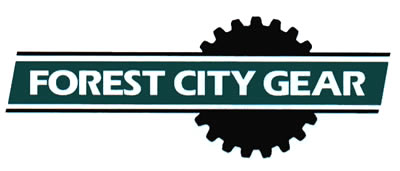
A new paper by Forest City Gear engineer Andrew F. Vincent, Ph.D., has been released entitled, A Note on the Design of the Gap Between Helices on a Double-helical Gear. The paper focuses on how the design and how it “imposes a necessary lower bound on the gap between the helices it is meant to produce.”
In the paper, Vincent illustrates an analytical solution to how to precisely determine this lower bound. As the whitepaper’s abstract states: “It is readily observed that the design of the gap between helices on a double-helical gear and the design of the manufacturing process(es) employed to manufacture the gear are inseparable. In particular, the outside diameter and swivel angle of a hob impose a necessary lower bound on the gap between the helices it is meant to produce. There are a number of different simple formulas meant to give approximations to this lower bound. Most are claimed to be accurate within a certain degree of precision. The purpose of this article is to illustrate an analytical solution to the problem that achieves arbitrarily small error.”
To download the whitepaper, click here.
Forest City Gear in Roscoe, Illinois, manufactures small and medium pitch custom gears, including double-helical gears for applications that call for low noise levels without thrust loading. According to Vincent, “The computation performed in this white paper also illustrates the calculation of the approach of the cutting tool used in a hobbing process, which we use daily when performing cost estimation. The more we understand the science of gear manufacturing, the better we are able to advise customers during the design process, to help them develop the most effective, efficient and manufacturable gears.”
For more information on Forest City Gear, phone 815-623-2168 or visit www.forestcitygear.com.
Contact Details
Related Glossary Terms
- pitch
pitch
1. On a saw blade, the number of teeth per inch. 2. In threading, the number of threads per inch.









